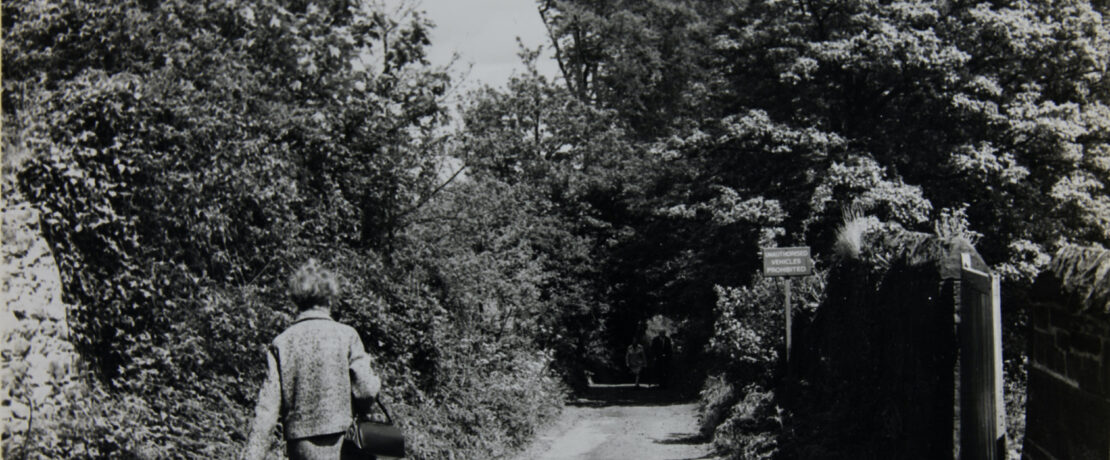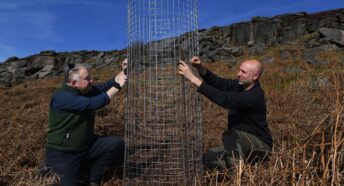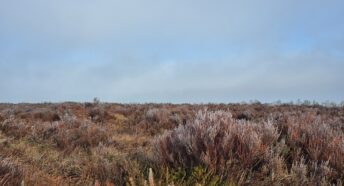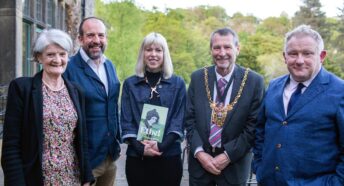Celebrating Ethel Haythornthwaite and 100 years of countryside protection
Throughout our Centenary year, we honor the remarkable legacy of our founder Ethel Haythornthwaite – a prominent environmentalist in Sheffield and a trailblazer of the countryside movement nationally.
Born Ethel Mary Bassett Ward on January 18, 1894, at Endcliffe Vale House, now part of The University of Sheffield’s student village, Ethel’s life took a transformative turn after the loss of her first husband shortly after they were married.
Encouraged by her family to take rejuvenating walks in the countryside and moorland which surrounded Sheffield, Ethel discovered the profound positive impact nature had on her physical and mental well-being. This, in part, illuminated Ethel’s passion and commitment to the countryside and fundamental to this, was that the countryside could be accessed by everyone, in order to experience those benefits.
Ethel later married Gerald Haythornthwaite and together they were a formidable force using their enthusiasm and determination to protect the countryside of what was to become Britain’s first national park – the Peak District.
In a poignant reflection, Ethel encapsulated the significance of countryside access for our wellbeing, stating: “Outside the city – there one began to live. The escape into clean air, the gradual return to nature – with this came satisfaction, peace, freedom, solitude, excitement. One grew to become conscious of its profounder value, something beyond health and high spirits – something to worship.”
Enthralled by the breath-taking beauty of a thriving countryside, Ethel dedicated her life to preserve the natural landscapes of the Peak District and South Yorkshire countryside, for the enjoyment of all.
Through her environmental campaigning, she led public appeals to acquire land and protect green spaces from inappropriate development. This included much-loved areas such as the Longshaw Estate and Blacka Moor, which were gifted to the people of Sheffield so that they could be enjoyed freely by everyone, for generations to come.
The unwavering determination of Ethel and Gerald Haythornthwaite to protect the countryside paved the way for Sheffield’s Green Belt status – England’s first. Its preservation was assured largely by the purchase of many of the farms and woodlands that surrounded the city, including much of the Mayfield Valley.
Ethel’s belief in the countryside as a sanctuary for all, a place of peace and beauty to be cherished and safeguarded, remains a guiding principle of our work to this day. As a leading countryside charity, we stand for a countryside that enriches all of our lives, regenerates our wellbeing, and that we in turn regenerate, protect and celebrate.
Ethel’s legacy – timeline of key events
- 1924 – Ethel Haythornthwaite founded the Sheffield Association for the Protection of Rural Scenery, also known as the Sheffield Association for the Protection of Local Countryside on 7th May. Among those present were Ethel Gallimore, G.H.B. Ward representing the ramblers’ interests, Gertrude ward, (Ethel’s sister), Alan Ward (her brother) and Sir Henry Hadow, Vice-Chancellor of Sheffield University.
- 1927 – Sheffield Association for the Protection of Rural Scenery went on to become the local branch of CPRE in 1927, and worked to protect the countryside of the Peak District and South Yorkshire countryside from inappropriate development.
- 1927 – the charity purchased The Duke of Rutland’s Longshaw Lodge and 744 acres on 29th September 1927.
- 1928 – Ethel fronted an appeal to save Longshaw Estate (now looked after by the National Trust) from development so that it could be gifted to the people of Sheffield.
- 1931 – The Longshaw Estate was presented to the National Trust on 25th March following two public appeals, assisted by the Sheffield Ramblers Association and a further generous gift from the Sheffield Town Trustees.
- 1932 – Ethel’s skilful negotiation helped acquire another 448 acres of threatened land at Blacka Moor, which would soon become part of a Sheffield Green Belt.
- 1933 – With the support of Alderman J.G Graves, a member of our Society, 448 acres at Blacka Moor was purchased and presented to the City of Sheffield as an open space for the enjoyment of its inhabitants in perpetuity.
- 1934 – 1936 – A further 268 acres at Longshaw Estate was purchased by the charity and presented to the National Trust.
- 1938 – Ethel was instrumental in developing a green belt around Sheffield its preservation was assured largely by the purchase of many of the farms and woodlands that surrounded the city, including much of the Mayfield Valley.
- 1945 – Ethel was appointed to the UK government’s National Parks Committee. She was the only woman on the committee and helped to make the successful case for the National Parks and Access to the Countryside Act of 1949.
- 1947 – Ethel was awarded an MBE for her unwavering determination to protect the countryside.
- 1949 – National Parks and Access to the Countryside Act secured access for everyone to open countryside whilst preserving and enhancing natural beauty; founded on the understanding that connection with nature is essential to the health of people, society and the planet.
- 1951 – The Peak District founded as the first national park in England on 17th April 1951 – creating and maintaining a protected space where nature and people can thrive.
- 1968 – The Countryside Act is passed, imposing a duty on every minister, government department and public body to have “due regard for conserving the natural beauty and amenity of the countryside”.
- 1994 – Haythornthwaite Wood, near Dore in Sheffield was planted in an area of Green Belt saved by CPRE in the 1936 Whirlow Bridge to Dore Moor campaign. It is dedicated to Ethel and her husband, Gerald Haythornthwaite.
- 2021 – CPRE Peak District and South Yorkshire named 95 hilltops in the Peak District, in tribute to Ethel Haythornthwaite
- 2022 – A blue heritage plaque was unveiled in Sheffield by Dame Fiona Reynolds CBE, the CPRE Peak District and South Yorkshire branch president, and an honorary graduate of the University of Sheffield.








